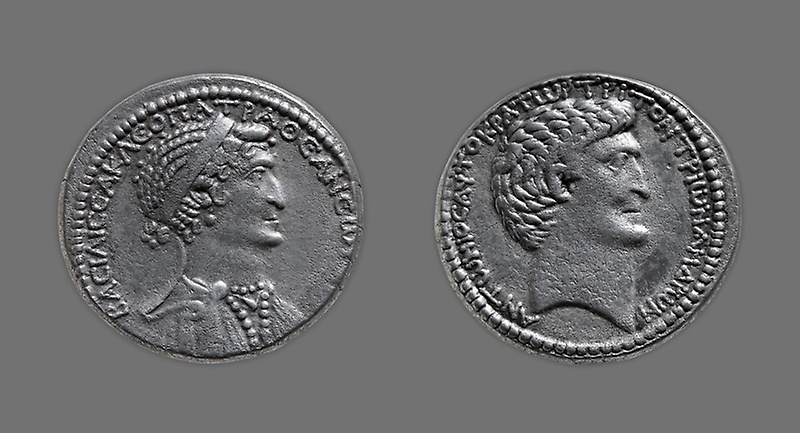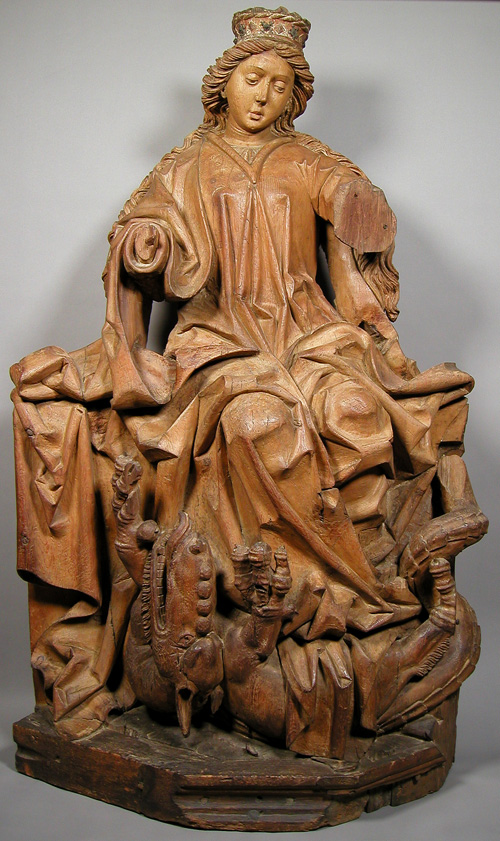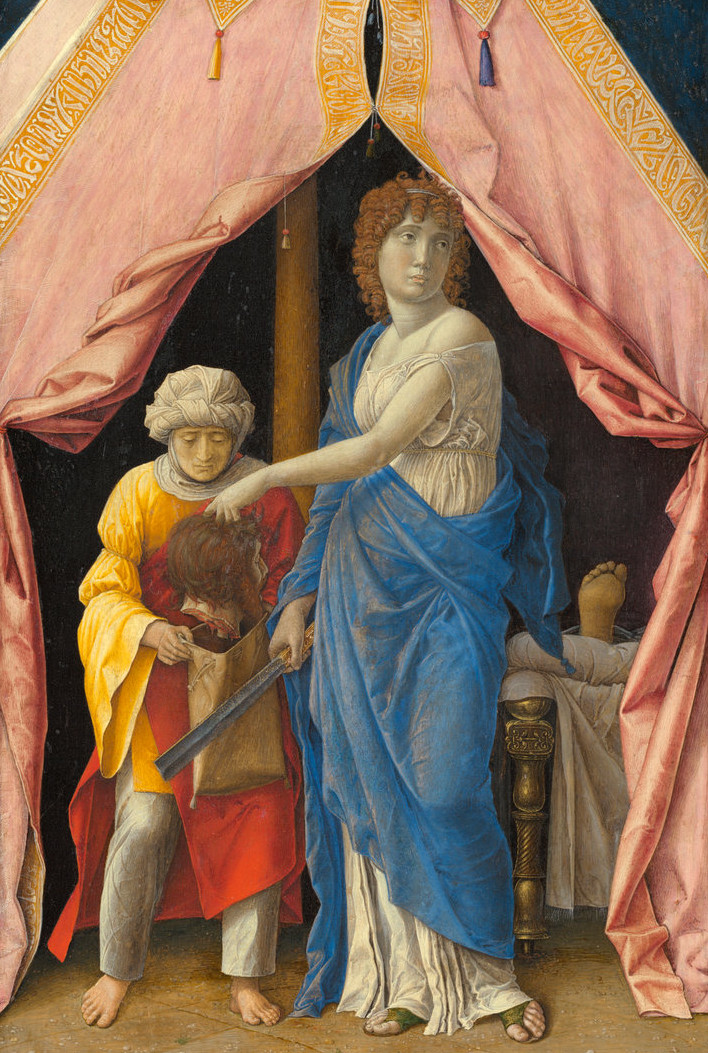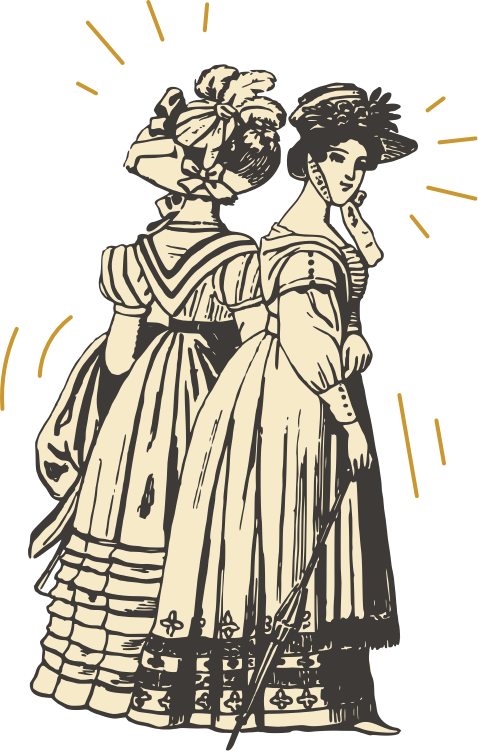Celebrating Women’s History Month
With Women’s History Month coming up, consider women and museums: ancient Roman sculptures. Demure portraits. Lots and lots and lots of nudes. You might be forgiven if that’s what comes to mind, but we can do better than that.
In creating the fun, fascinating Wonder Women in History Virtual Scavenger Hunt, we rounded up 20 pieces of art featuring some of our favorite powerful women in museums. From dragon-slayer to goddess, the following are just a few examples of the countless ladies you might meet along the way.
The Famous Miss Cleo

Meet: Cleopatra, queen of the Nile, ruler of Egypt. Maybe you’ve heard of her?
Her Claim to Fame: A symbol of who run the world (girls)
Her Story: When King Ptolemy XII of Egypt died, his son and daughter fought over his throne. Son forced daughter from the country, daughter courted Julius Caesar and raised an army, and finally son fled from daughter’s forces. And so began the 21-year-reign of Queen Cleopatra.
The two sides of this coin on display at the Art Institute of Chicago depict Cleopatra, seen on the left there, and Mark Antony, her lover and doomed co-leader of the Roman Empire. The fascinating thing about this coin is that Cleopatra’s image is far from the renowned beauty and Elizabeth Taylor–esque glamor of legend. Indeed, theories abound over whether this is an accurate portrayal, or whether she was shown as more mannish to make her easier to understand—after all, power over a kingdom as great as Egypt was a man’s domain.
Or, given the clear similarities in nose and chin and neck, is her image influenced by the flip-side face? Is this really Cleopatra, or just Mark Antony in drag? We may never know.
Dragon Lady

Meet: Saint Margaret, also known as Margaret the Virgin or Margaret of Antioch
Her Claim to Fame: A symbol of the power of remaining true to your beliefs
Her Story: The Metropolitan Museum of Art sums up this saintly story: “According to legend, St. Margaret was imprisoned for refusing to marry the governor of Antioch. Satan appeared to her in the form of a dragon and swallowed her as she clutched a cross in prayer; she then ripped open his belly with the cross and emerged unscathed. … The vanquished dragon lies at her feet.” Yowzah.
Biblical Barber-ella

Meet: Delilah, of “Samson and” fame
Her Claim to Fame: A symbol of male cultural anxiety about powerful women
What’s her story? You’ve probably heard this one before: The heroic champion Samson is betrayed by his lover, Delilah, who cuts off his hair, the source of his incredible power. The beauty of this piece at the Fine Arts Museum of San Francisco is that you might not even guess at the subject—until you notice the locks of shorn hair at the woman’s feet. Is she ashamed of depriving Samson of his power? Resigned? Unconcerned?
And while Delilah is generally cast as the villain, consider the fact that the rulers of Delilah’s people offered her the modern equivalent of $15 million to learn the secret of Samson, a man famed for leaving a path of death and destruction in his wake—and who had slept with a prostitute right before showing up to woo Delilah. What would you do in her sandals?
Damn, Diana

Meet: Diana, goddess of the hunt
Her Claim to Fame: A symbol, in this case, of chastity and purity
Her Story: Depicted countless times throughout art history, the myth of Diana and Actaeon sees the latter, a human hunter, chancing upon the former bathing with nymphs in a forest lake. Startled and outraged at getting peeped in the buff by some rando, Diana splashes Actaeon, turning him into a deer…who then is killed by his own hunting dogs. Harsh? Maybe. But he never “accidentally stumbled” upon any unsuspecting naked women again, so…
Hey Judith, Don’t Be Afraid

Meet: Judith, another oft-painted heroine of legend
Her Claim to Fame: A symbol of fearlessness in the face of overwhelming power
Her Story: Long story short, the beautiful widow Judith saved her home from the invading general Holofernes when she faux-seduced him, getting him drunk and then decapitating him. While many depictions focus on the violence of the beheading, this piece at the National Gallery of Art skips to the aftermath, as an almost unconcerned Judith casually hands off Holofernes’ noggin and gets on with her day. Respect.
~
Credits: Lead photo by Ann Di on Unsplash; artwork images in the public domain
